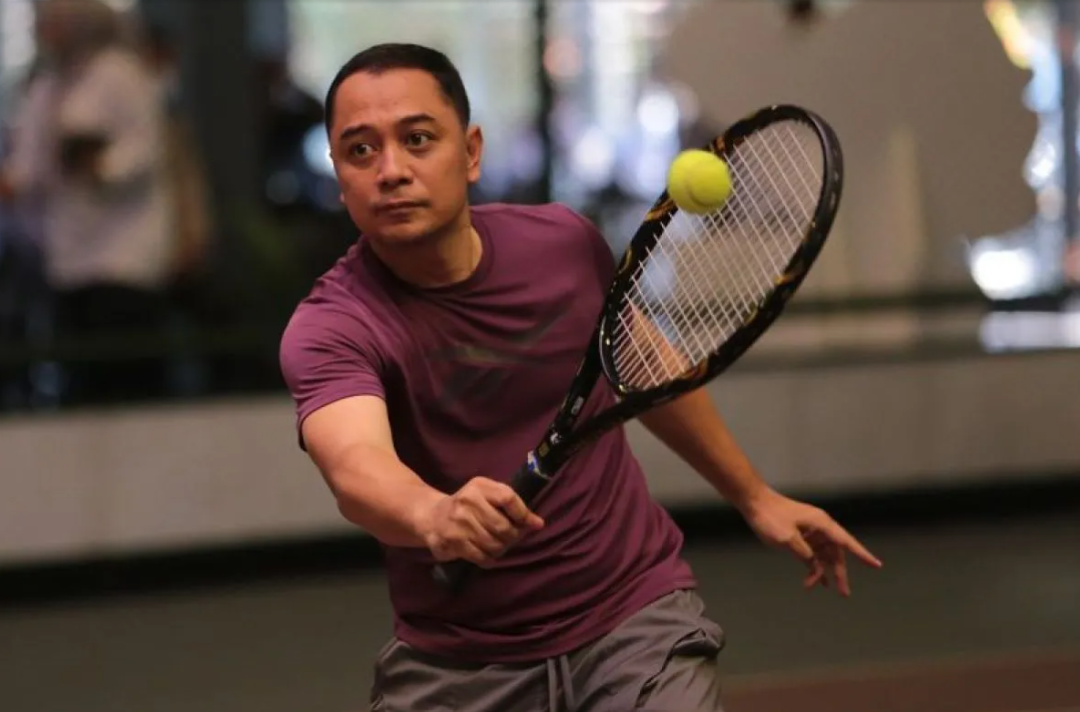You may not think much about balance now. Especially if you are still young, in your 30s or 40s.
However, the movements suggested by this certified trainer play a significant role in health and longevity as we age, strengthening our strength and stability.
A 2022 study reinforced in the British Journal of Sports Medicine found that people who cannot stand on one leg for 10 seconds have a higher risk of cardiovascular disease, obesity, and even death. Poor balance can also increase the risk of falls, which can lead to serious injury.
But don't worry, balance can be improved. This article outlines five exercises aimed at people over 50, but these exercises are actually beneficial for all ages.
These five exercises are aimed at people over 50, but they are actually beneficial for all ages.
It's very affordable. All you need is an exercise mat or towel for extra padding on your knees.
Let's start building strength and balance.

1. Clamshell
Set: 3 | Repetitions: 15 on each side
- Lie on your side with your knees bent and one leg on top of the other.
- Engage your core muscles and keep your spine in a neutral position.
- Keeping your feet together, lift your upper knee upwards.
- Slowly lower it back down.
- Do 15 repetitions, then repeat on the other side.
Benefits: Clamshells strengthen the glutes and hip abductors, which help with pelvic stability. The stronger these muscles are, the more balanced and stable your body will be when walking, running, climbing stairs, or getting up from the floor.
Trainer's tip: Avoid letting your upper hip fall backward as you lift your knee.
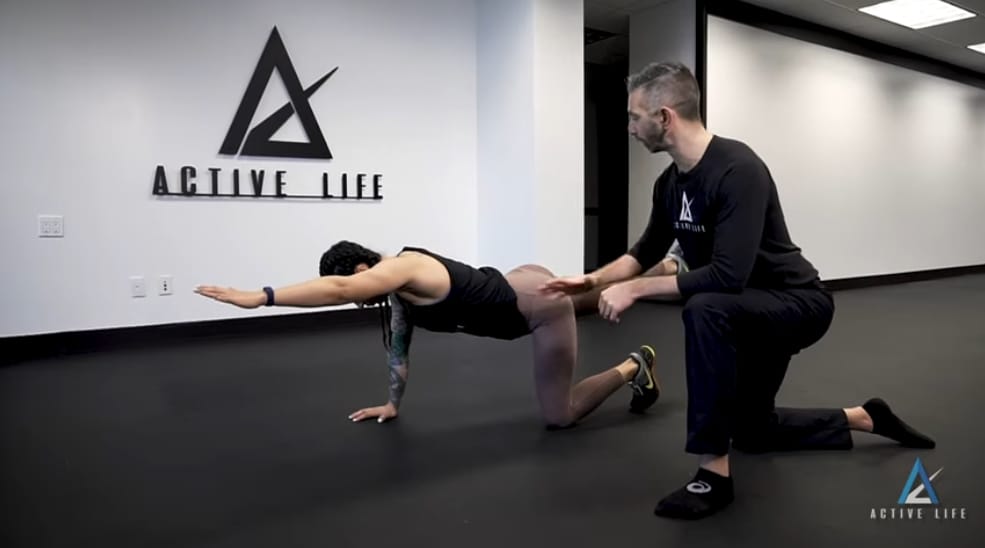
2. Bird Dog
Set: 3 | Repetitions: 12 on each side
- Start on your hands and knees.
- Engage your core muscles and keep your spine neutral.
- Extend one leg back and the opposite arm forward, parallel to the floor.
- Hold briefly, then return to the starting position.
- Repeat on the other side.
- Continue alternating until you have completed the repetitions on each side.
Benefits: Bird dog is one of the best exercises for deep core strength. It works the transverse abdominis and internal obliques, which help stabilize the spine and maintain an upright posture. Bird dog also trains body awareness and coordination—both important for balance.
Trainer's tip: Don't let your lower back arch toward the floor. Keep your hips square to the floor, and avoid rocking to the side as you lift your arm and leg.
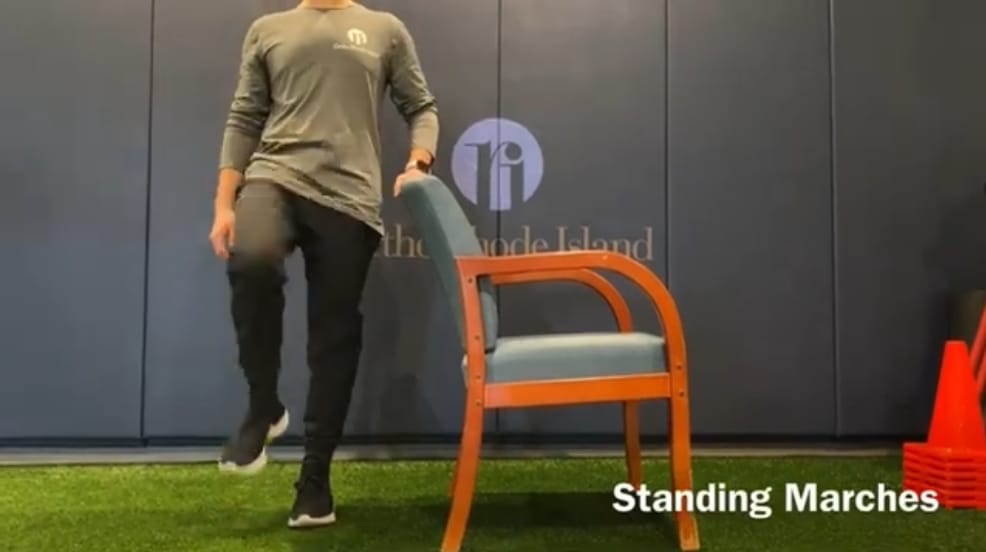
3. Standing Marches
Set: 3 | Repetitions: 15 on each side
- Stand with your feet hip-width apart.
- Engage your core muscles and keep your spine neutral.
- Lift one knee as high as your hip, then lower it to the floor.
- Repeat on the other side.
- Continue alternating until you have completed the repetitions on each side.
Benefits: Standing marches train you to stay stable and upright when shifting weight from side to side. This movement activates the core and hip muscles to improve balance and coordination in daily activities such as walking and climbing stairs.
Coach's tips: Use a chair for support if needed. Focus on standing upright on the supporting leg and avoid swaying to the side.
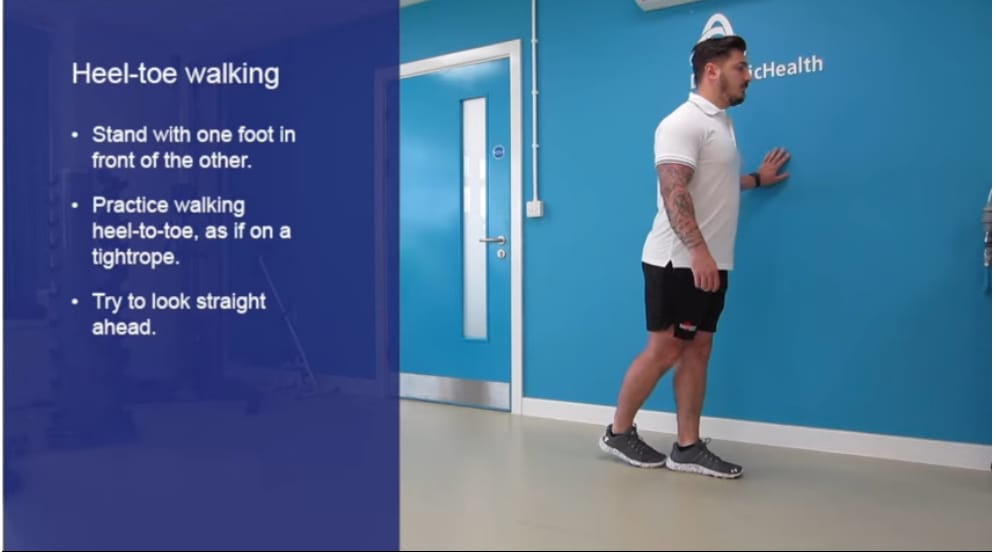
4. Heel-to-Toe Walk
Set: 1 | Repetitions: 10 steps in each direction
- Stand upright and tighten your core muscles.
- Imagine a straight line in front of you.
- Step one foot forward over the imaginary line.
- Follow with the other foot, positioning the heel directly in front of the toes.
- Continue walking for 10 steps, then turn around and repeat.
Benefits: This heel-to-toe walk lowers the center of gravity, narrows the base of support, and forces the stabilizing muscles in the hips and core to work harder. This is a great way to train muscles to activate when you lose balance.
Coach's tips: Practice near a wall first if you need extra support.
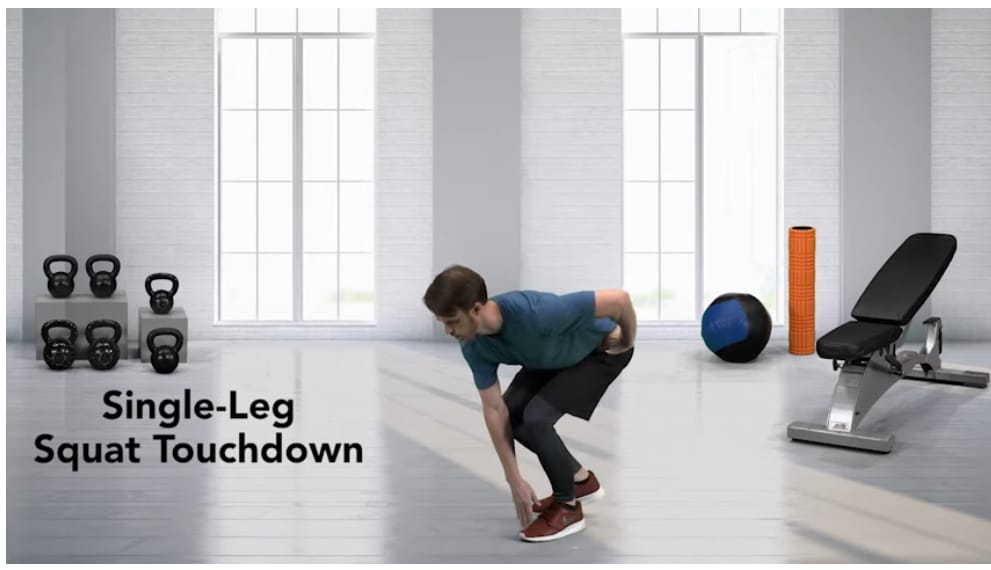
5. Single-Leg Toe Touch
Set: 3 | Repetitions: 10 on each side
- Stand upright with feet hip-width apart.
- Engage your core muscles and keep your spine neutral.
- Lift one foot off the floor and stand on one leg.
- Bend the knee of the supporting leg as if doing a one-legged squat.
- Reach down to touch the supporting foot with the opposite hand.
- Slowly return to standing.
- Complete the repetitions on one side, then repeat on the other side.
Benefits: This is a more challenging balance exercise. You are not only balancing on one leg, but also training balance in motion. Falls usually don't happen when standing still, so it's important to train the stabilizing muscles while moving.
Coach's tips: Use a chair or wall for support if needed. If you can't touch your toes yet, touch your thigh or knee first.
Good luck! This exercise can be done routinely to improve balance and reduce the risk of injury.
Source: Fit&Well




